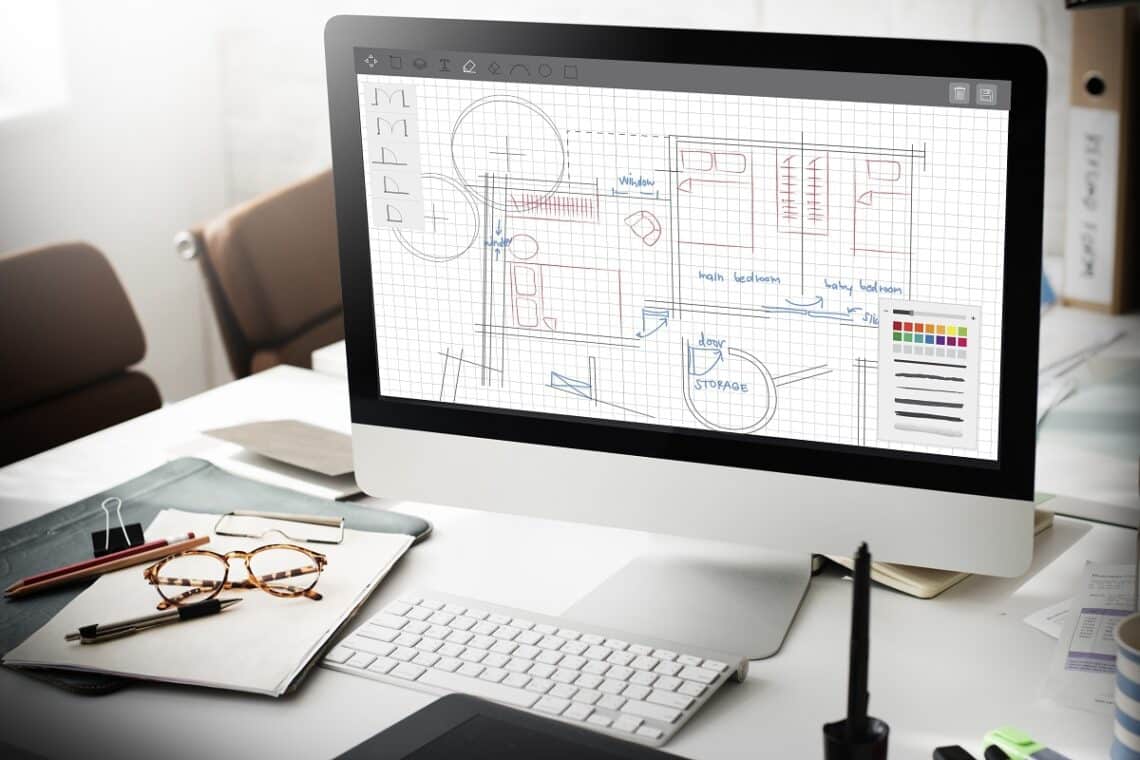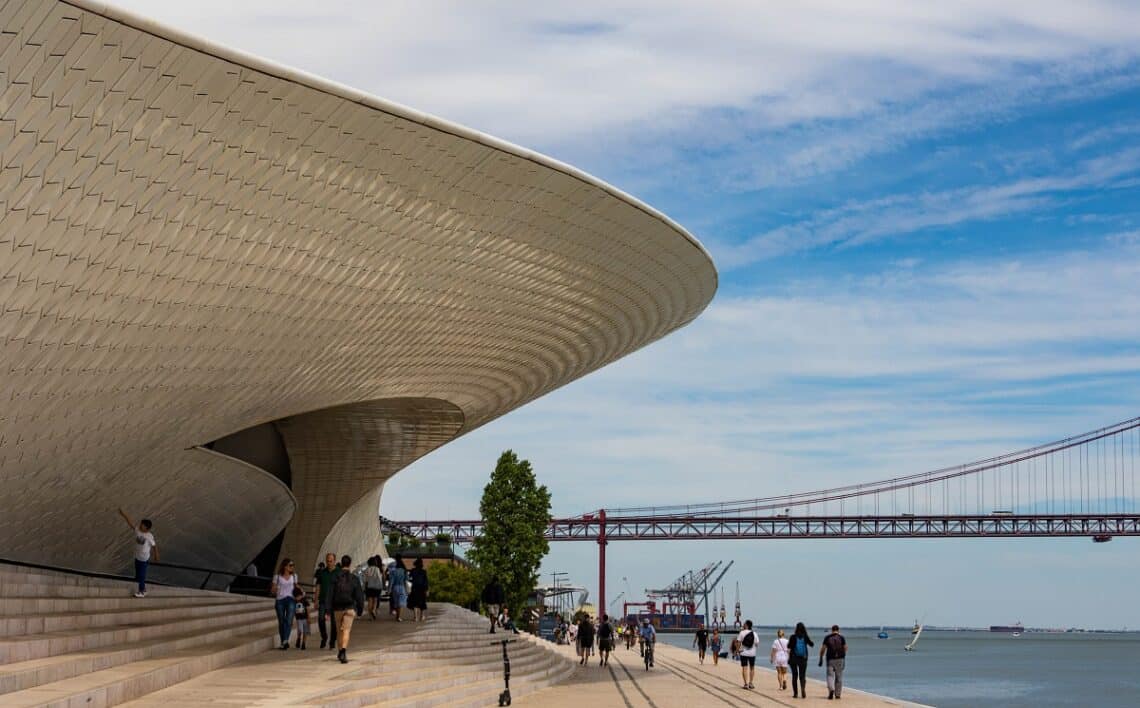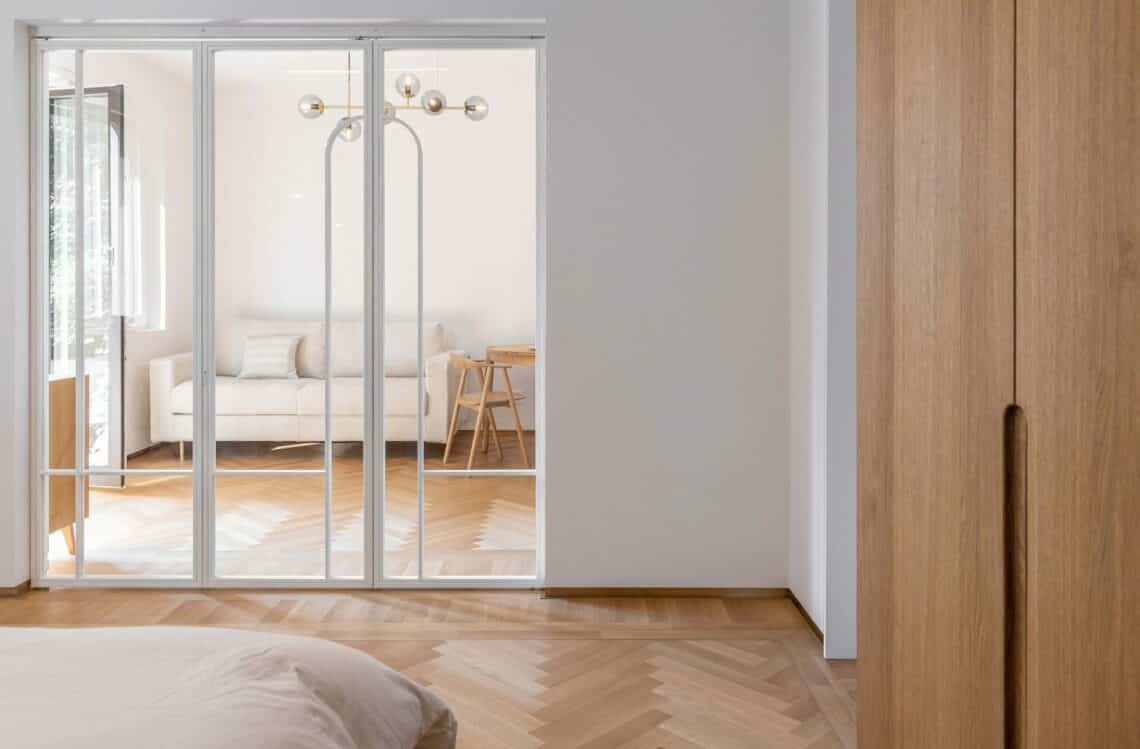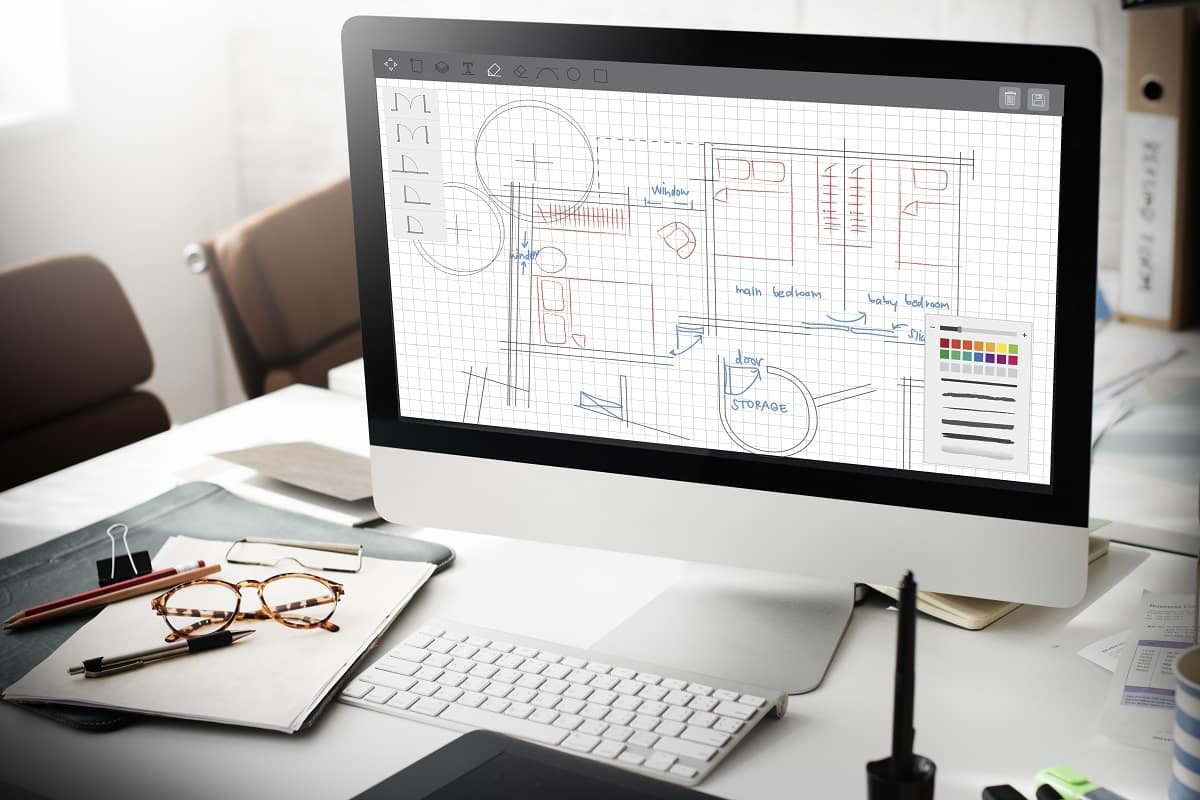Architecture is the process of designing buildings and structures using scientific principles and artistic design.
It encompasses several concepts and elements like urban design, landscape architecture, and more. Architecture requires both mathematical proficiency as well as artistic ability. Design concepts are the most vital aspect for getting started in this field.
What’s this design concept then? It is the fundamental starting point from which all architectural ideas emerge and progress. The architectural design concept is one of the most challenging aspects of this field of study. No wonder then that many students, as well as established architects, find it complicated.
The purpose of this article is to provide you with all the information you require regarding architectural design concepts. We hope it will help you clear any doubts and hopefully make the subject much more engaging.
So, let’s get to it then.
Guide To Architectural Design Concepts

What Is An Architectural Design Concept?
In layman’s terms, a concept is an idea, notion, or thought that is the fundamental building block of any project. When talking about architecture, a concept is usually the approach taken to complete the project. It is what drives the project forward and provides a basic framework within which to function.
An architectural design concept is an abstract idea that guides the project and is the project’s core identity. It is not to say that it remains constant over the entire duration of the project. As the structure’s design changes, the concept can also undergo evolution.
An architectural design concept is the first part of the project and precedes all other activities in the design process. It’s only when the design concept has been developed and finalized can the project begin in earnest.
Designers use architectural concepts to respond to the design situations they face. The concept helps them translate conceptual designs into functional physical structures. It is one of the elements that remain as important initially as after the project.
Architectural design concepts can originate from several different sources and can result in multiple variations and outcomes. Central themes, critical issues, and other factors affect the development of the concept.
Coming up with these concepts is one of the most challenging aspects of the architectural process. Several factors may be responsible for this, such as lack of inspiration, writer’s block, project pressures, not enough importance to such concepts in architectural courses, etc.
The Source Of Architectural Design Concepts
There are primarily three key areas from where architectural concepts originate:
-
- The Site – This includes context, history, use, climate, orientation, and other similar factors.
- Design Brief – The Design Brief consists of the construction budget, building and client requirements, accommodation, etc.
- Building Typology – The building to be constructed and the nature of its use also affect the type and nature of the design concept.
Other factors that can also serve as inspiration for design concepts include the area’s culture, society, available technology, research, analysis, etc. Even personal experiences, perceptions, emotions, and influences can be a source of architectural concepts.
There are several methods of coming up with an architectural concept, and almost anything can serve as an inspiration. However, the most impressive architectural structures are generally relatable to the history of the site and also well-rooted in context.
Undertaking an analysis of the site and conducting proper research plays an integral part in developing ideas. Le Corbusier’s An Analysis of Form provides several excellent examples of getting results using this process. Once the original concept has been created, it can be supported using the building typology and design brief.
The Need For Generating A Concept
As explained above, before starting to construct any structure, it is vital to develop an architectural design concept. There are several important reasons why this is the first and most important step.
-
- A proper architectural design concept provides the architect with a clear framework and direction while making decisions relating to design
- It acts as a rule book by giving some basic guidelines to follow for getting the desired outcomes
- If any doubt arises, consulting the concept provides an ideal solution
- The design concept grounds the architect and helps focus on the goal, preventing distractions
- Sticking to the idea also helps ensure that resources and time are not wasted
- A structure is judged as average or successful for academic purposes depending on its adherence to the design concept
- The more relevant and coherent a structure is, the more exciting and engaging it becomes
- The architectural design concept also helps in determining project clarity and consistency
The Approach To The Design
The architect can focus on several areas during the starting stages of the design project that will guide the progress according to the concept. He can draw upon these interconnected regions throughout the project as it progresses.
The designer can shift and combine different themes to expand and explore different approaches for developing the design concept. Some of these approaches include:
1. Functional
The functional approach weighs the importance of including more functional elements against the aesthetic appearance of the structure. This question generally depends upon the nature and building to be constructed.
For specific structures, functionality plays a more critical role than appearance. For instance, a factory needs to have a highly functional structure rather than an eye-pleasing one. Similar would be the case when constructing a hospital building, where efficiency is critical.
However, even while focusing on the functional aspects of a structure, some space can be allowed for aesthetics. Every individual project offers a different set of challenges to overcome, but functionality should always be a focal point during the design process.
2. Material
One of the techniques to develop architectural design concepts is to focus on the materials used in constructing the structure. Paying attention to specific material will lead to other forms of construction, thereby generating an organic appearance.
Focusing on the material using the site’s context will generally lead to historical use for construction in the area. Using locally available materials also provides the inhabitants of the space a sense of familiarity and comfort.
Additionally, it acknowledges the environmental benefits of sourcing materials locally.

Photo Copyright of sculpta.ba
3. Contextual
Adopting a contextual approach for developing the concept requires paying attention to the site’s surroundings and context, historical characteristics, and the local inhabitants. It is possible to draw inferences from the physical and non-physical data through proper analysis.
It is highly recommended to have some degree of contextual approach in every project. The emphasis laid on this approach varies depending on several factors, such as the architect’s priority, the purpose of the building, etc. Some designers might make this the most crucial element in the design, while others may use it as a guiding factor.
An important point to note is that adopting this approach does not guarantee that the structure will suitably adjust to the surroundings. One example is that the architect may choose to create a structure that is entirely opposite to the context for the purpose of contrast.
4. Conceptual
The conceptual design approach is another popular approach that architects employ to generate an architectural concept. It takes inspiration from conceptual architecture, putting the complete focus on the idea.
Under this approach, the design process emphasizes the idea instead of focusing on various techniques and procedures. The primary purpose of conceptual architecture is to provoke thought and help explore different ideas and concepts. Such architecture may not be actually constructed.

Photo Copyright of sculpta.ba
5. Formal
This approach utilizes the formal language of the architecture for the development of an idea. Architecture from the classical period provides the required knowledge for developing various rules during the design process.
The classical system of architecture is one of the first systems of architectural design development. It helps determine the correct scale, form, and proportions for various structures.
While modern-day structures are not classical in their construction, the rules architects follow incorporating elements such as the golden section, scale, proportion, etc., come from the classical conceptual approach.
6. Collaborative
Most building design projects are collaborative processes, with members of a large team working on different aspects of the project. It includes engineers, contractors, surveyors, stakeholders, and more. Yet, in many cases, the end-user of the building is not directly involved in the design process, despite being a vital factor to be considered.
In recent times, many architects are starting to adopt the end-users approach during the design process. They engage with the user in a collaborative exercise which also helps the latter contribute to the design development.
It is a general approach in projects with a social focus or a large community. In such circumstances, the knowledge and skills of end-users can help develop a good concept. Although this approach is not very useful in the case of student projects, it is an excellent approach to design.
7. Philosophical
The philosophical approach to the development of an architectural concept requires consideration of the design philosophy. The design philosophy is a set of values that helps mold the design of the project. These values could be the guiding principles of the architect, adoption of the design brief, the site context, etc.
Some aspects that should be taken into account include scientific values against artistic values, rational against irrational, individual against society, etc. Following this, you can view the values in terms of the design.
Types of Architectural Design Concepts
There are many different types of architectural concepts you can adopt. These can originate from various sources and apply to different kinds of projects, depending upon various factors. Some of the famous architectural design concepts include:
1. Typography
The typography of the project site is helpful for the development of different types of approaches to architectural concepts. It can include the building environment, its structural approach, perception among the public, utilization of the context, etc.
For example, a steep site requires the adoption of a robust structural concept, while a flat site needs protection against exposure to the elements.
2. Vernacular
Structures should always relate to the context, and in the case of a solid vernacular, it is a great advantage for developing the concept. One excellent example of this is The Dune House by Norwegian architects Jarmund and Vigasnaes, which explains how to idea is rooted in the site.
Another instance is the architecture from Australian architect Glenn Murcutt, which uses the same approach.
3. Historical
Historical research of the project site and its surroundings opens up several excellent opportunities for concept development. Almost every site has an interesting historical background that provides information about past construction techniques and tells how to modernize them.
A historical approach to concept development can also help determine how to establish a new project keeping in mind the original plan. Using historical influences and techniques can be highly beneficial for the project.
4. Physical Features
Physical features of the area in which the project is set may include mountains, rock formations, forests, artificial structures, etc. It is possible to use these physical features to mold the design process and guide concept development. Examples include Carmody Groakes Burgh Island House that uses the site’s coastal cliffs for support.
5. Form and Volume
It is best to begin the design process with a simple volume and form study that allows the manipulation of positive and negative spaces. However, this method alone is inadequate to help develop an abstract idea for the project. This technique should generally be used in conjunction with another approach.
6. Views
It is possible to design and shape the structure to maximize the advantage of different views from the site. Take advantage of various key spaces while setting aside functional areas. If the site lacks any perspective out, then views need to be created. The concept should be developed keeping this in mind.
If there are views out, then create site lines out and across the form of a lattice. It will help in building up the concept of aid in further exploration. The idea should consider where and how the views are and how they relate to the building.
7. Public and Private
Undertaking a proper site analysis will help in identifying the location of various public and private areas. Depending upon the nature of the context and the type of structure, it is ideal for generating a perfect concept for the project.
In the case of an urban project, private spaces should be completely detached from the surroundings and help create a microenvironment. On the other hand, in the case of rural settings, the private spaces can be connected to the surroundings while being established separately from public areas. OMA’s Maggie Center in Glasgow is a perfect example of this.
8. Accommodation
The design brief can be very useful for identifying and developing visual spaces that are connected, separated, or within proximity to one another. It will help create a spatial concept wherein the areas are arranged according to use, shelter, views, orientation, etc.
9. Use
The usage approach is similar to the accommodation approach and requires the arrangement of structures and accommodation according to their category. Additionally, it takes into consideration the interaction of the user as he moves through the space.
This approach is generally visible in supermarkets where the vegetables and fruits are usually placed at the front close to the entrance. This decision makes your customers feel that they are entering a natural environment.
Museums and art galleries also use this approach, guiding the visitor purposely through the exhibition spaces.
10. Grid
It is easy to create a site grid for any project, which allows a wide variety of applications. Site grids provide separations and justified areas as well as strategic views. Mapping views overlooking the site will also help locate areas of interest.
11. Others
There are several other concepts such as mass, journey, movement, addition, subtraction, etc. All these offer different types of opportunities for developing an architectural idea for the project. Select the approach that best suits the particular project’s needs, keeping in mind the various essential factors that influence the project.
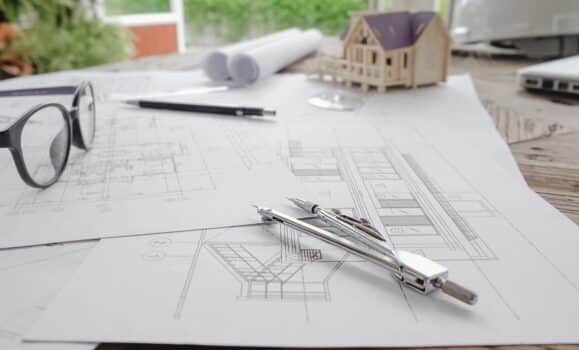
Conclusion
The development of the architectural design concept is one of the most vital parts of the project design process. A project that has started with a well-developed concept has a greater chance of resulting in a positive outcome.
There are several approaches to developing a concept for a particular project, and the selection of the process varies from case to case. It is also possible to combine and use two or more approaches together for the best results.
We hope this article provides all you need to know about architectural design concepts and improves your understanding of the subject.



